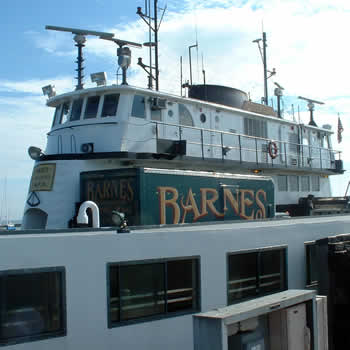 As one of the Commonwealth's thirteen regional planning agencies, the Martha's Vineyard Commission (MVC) coordinates regional transportation planning on Martha's Vineyard in cooperation with federal, state, and local partners.
As one of the Commonwealth's thirteen regional planning agencies, the Martha's Vineyard Commission (MVC) coordinates regional transportation planning on Martha's Vineyard in cooperation with federal, state, and local partners.
The MVC collects data on various aspects of the transportation system, including: traffic counts, turning movement counts, inventories of existing facilities and usage, and parking supply and occupancy. The data is collected primarily in the summer months. Other data from the Steamship Authority and Vineyard Transit Authority is also compiled especially for updates to the Regional Transportation Plan.
Transportation, including traffic and parking, is an important factor considered when projects are reviewed by the MVC as Developments of Regional Impact.
Federal Transportation Legislation
This planning is carried out in the framework of the latest federal transportation legislation, currently the Moving Ahead for Progress in the 21st Century Act or MAP-21. As a Regional Planning Agency (RPA) that operates as the equivalent of a Metropolitan Planning Organization in Massachusetts, the MVC receives federal funding along with a state match to perform a comprehensive, continuing, and cooperative, or “3C” planning process.
- Support the economic vitality of the United States, the States, nonmetropolitan areas, and metropolitan areas, especially by enabling global competitiveness, productivity, and efficiency;
- Increase the safety of the transportation system for motorized and non-motorized users;
- Increase the security of the transportation system for motorized and non-motorized users;
- Increase the accessibility and mobility of people and freight;
- Protect and enhance the environment, promote energy conservation, improve the quality of life, and promote consistency between transportation improvements and State and local planned growth and economic development patterns;
- Enhance the integration and connectivity of the transportation system, cross and between modes throughout the State, for people and freight;
- Promote efficient system management and operation; and
- Emphasize the preservation of the existing transportation system.
Who’s Who of Island Transportation Planning
Transportation Planning in Dukes County is the responsibility of a Committee of Signatories that is advised by a Joint Transportation Committee. The Massachusetts Department of Transportation (MassDOT) provides funds to the Martha’s Vineyard Commission (MVC) for transportation planning on the Vineyard.
Committee of Signatories: The Commission and its three partners—the Executive Office of Transportation and Construction, MassDOT, and the Martha's Vineyard Regional Transit Authority—act as a Committee of Signatories that oversees transportation planning in Dukes County. (It is the equivalent of a federally designated Metropolitan Planning Organization that exist in regions in the country with urban populations of more than 50,000 people, including ten Massachusetts Regional Planning Agencies). The Committee of Signatories is comprised of the chairmen of the Martha’s Vineyard Commission and Vineyard Transit Authority as well as the Secretary of the Massachusetts Department of Transportation (MassDOT) and the Administrator of the MassDOT Highway Division. The Committee of Signatories does not officially meet on Martha’s Vineyard. Instead the Martha's Vineyard Joint Transportation Committee (JTC) meetings provide for discussions and public input.
-
A Memorandum of Understanding: defines the "3C" process, the responsibilities of the decision-makers and the roles of the Joint Transportation Committee.
-
JTC Bylaws: outlnes how the JTC operates.
Current Transportation Planning Efforts
Shared Use Path Network: Martha's Vineyard has an extensive network of Shared Use Paths (SUPs), often referred to as bike paths. They allow locals and visitors to travel to work, school, shopping, and entertainment destinations, as well as to spend recreational time outdoors. They provide an alternative to riding on the road (which bicyclists have the right to do even if there is a nearby SUP) for those cyclists not comfortable being on the same roadway as motorized vehicles. However, the 31 miles of SUPs have several important gaps, which means that bicyclists are forced out onto the road, often in the most congested and dangerous locations, and efforts are underway to complete the most heavily used part of the SUP network by filling in these missing gaps. Click here for links to a number of documents about this effort.
Up Island bicycle-pedestrian safety improvements
MVC will continue to look at how passage by pedal and by foot can be made safer, up island. We will continue to work toward this while aiming to maintain the roadside character.
Field data collection with a high precision GPS device will continue along the length of North Road. This data will help inform where the existing pavement runs within the 50' Right of Way, and in turn, better determine how much of the Right of Way remains on either side. Furthermore, it will help determine where key features exist inside that dimension. The types of data points that will be collected include survey markers (monumentation), stone walls, pavement edge, and large trees to help round out the existing utility pole and culvert spatial data which we already have. With this information, more tangible concepts for improving safety can developed and then introduced to the Town Boards/Committees for consideration.
For questions, contact Special Projects Planner, Dan Doyle, at [email protected] or (508) 338-7316.

